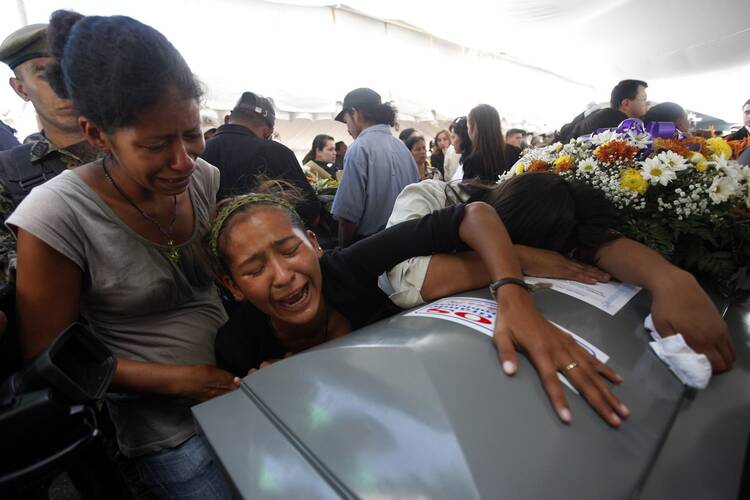MEXICO CITY (CNS) — Nearly a decade after the slaying of 72 migrants on a ranch in northeastern Mexico, church leaders and migrant shelter operators are once again demanding the authorities properly investigate one of the country’s most notorious crimes.
The “pastors and migrant defenders” also called for Mexican officials to provide justice to the families of the victims of the massacre on a ranch near the town of San Fernando, about 90 miles south of the Texas border, where drug cartel gunmen murdered the abducted migrants, who refused to go to work for them.
“For more than 10 years, the investigation has not advanced. No sentences have been handed down. There are no scientific investigations nor contextual analyses. There’s no transnational investigation. The families continue waiting for explanations and accountability, but there’s no continuity in the investigation,” read a statement signed by Bishop Enrique Sánchez Martínez of Nuevo Laredo, director of social ministries for the northeast ecclesiastical province and migrant shelters in three states.
“Beyond the massacre at San Fernando (and) accompanying the families of the victims who seek justice and the reparation of damage, we demand that the competent authorities take seriously the grave situation of human rights (in Mexico) so that such violence never repeats itself.”
The massacre at San Fernando caused outrage in Mexico and internationally and highlighted the growing power and cruelty of drug cartels and organized crime, which at the time were moving into illegal activities such as human trafficking and kidnapping migrants for ransom.
Members of Los Zetas, a cartel founded by ex-Mexican special forces, are accused of the crime, but no one has been sentenced. Not all of the victims have been identified.
“The only certainty is that it was organized crime,” said Javier Urbano, a migration expert at the Jesuit-run Iberoamerican University.
A survivor of the massacre — an Ecuadorian national — walked 10 miles to a military checkpoint and said the migrants had been transported to a ranch, bound and blindfolded, and were shot dead. A second massacre occurred in the region in 2011 as Los Zetas’ gunmen pulled at least 193 passengers off buses traveling through San Fernando.
Ten years on, the massacre’s pending anniversary has failed to capture the public imagination, and polls show attitudes in Mexico toward migrants transiting the country deteriorating. Analysts also say the Mexican government has not shown the same interest in resolving the case as other atrocities, such as the disappearance of 43 students in 2014.
“Any slaying or any serious problem always ends up in impunity because the delivery of justice in Mexico is so deficient,” Urbano said. “Nobody wants to manage a problem that happened in a previous government” unless it’s politically useful, he added. “San Fernando is no longer politically profitable. (It’s) a case to be resolved someday.”
In a video posted Aug. 19 by the Diocese of Saltillo, Bishop Raúl Vera López angrily denounced the lack of progress into the San Fernando massacre, saying, “The most astonishing thing is the do-nothing policy of the Mexican government.”
He also warned, “If we leave these things in impunity, our society will decompose and it will catch up with us.”










